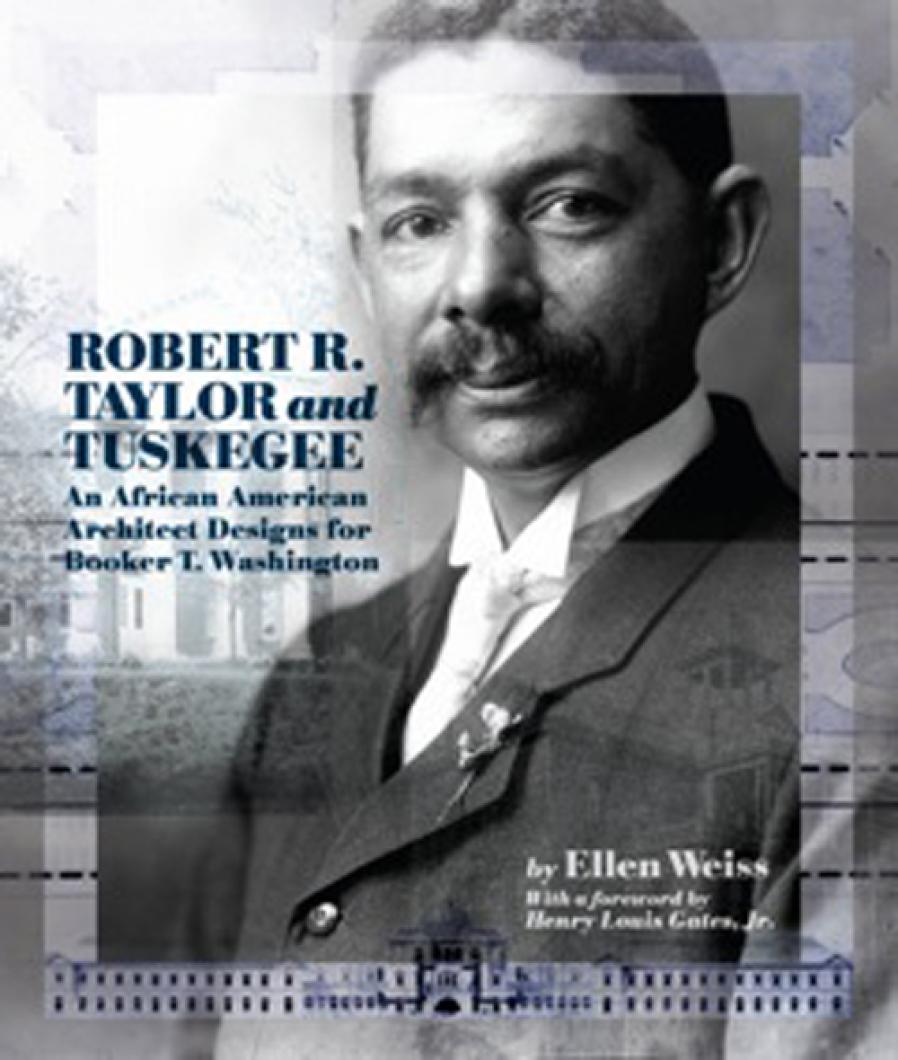Robert Taylor (1868-1942) graduated from M.I.T. in 1892 with a professional architecture degree, becoming the first fully accredited black architect in America.
His father, Henry Taylor, a freed slave from Wilmington, North Carolina, had turned his expertise with naval supplies into a thriving business that led to his reputation during the era immediately following the Civil War as “the wealthiest black landowner in the state.” His success enabled him to send all five of his children, girls and boys, to college.
Upon graduation from M.I.T., Robert Taylor received numerous job offers from design firms and academia, but it was Booker T. Washington, the visionary educator and author of Up from Slavery, who enticed Mr. Taylor to come to Alabama and help expand the campus of the Tuskegee Normal School for Colored Teachers, where Mr. Washington was president.
Expanding a colored university at the turn of the century in the heart of the Deep South was not without its challenges, but it was within this context that the two men would go on to create an academic city on the hill for post-Civil War black students, and, eventually, a world-renowned university.
In her new book, Robert R. Taylor and Tuskegee: An African-American Architect Designs for Booker T. Washington, author Ellen Weiss of West Tisbury and New Orleans, and professor emeritus at Tulane University, tells the story of Mr. Taylor in a manner and style that will entice everyone, from architectural academic to the uninitiated.
Reached by telephone recently, Ms. Weiss was complimented on the way her writing made the subject both accessible and engrossing.
“That’s what I’d intended,” she said with a chuckle. “I’ve been working off and on for twenty years on this project,” she added.
Ms. Weiss also noted that Mr. Taylor was familiar with the Vineyard. While attending M.I.T. he spent the summers of 1891 and 1892 on the Island earning money as a carpenter.
Professor Weiss has previously written about the Vineyard. In 1987 she published a book about the Oak Bluffs Camp Ground entitled, In The Woods: The Life and Design of an American Camp Meeting on Martha’s Vineyard.
Booker T. Washington and Robert Taylor believed buildings should be composed of bricks because bricks implied permanence. In the first few decades, Tuskegee students produced bricks from their own soil and kilns. Mr. Taylor’s brick-and-mortar legacies are many, including the campus’s Carnegie Library, built in 1901, the stately White Hall for executive offices, and the largest of the buildings during that era, the sprawling Tompkins Dining Hall. This building featured glossy wide floors and tables with white linen. Mr. Washington understood that the offspring of slaves most likely had no recourse to social dining and that the ability to enjoy meals in such grand style was educational as well as nutritional.
“The splendid buildings contradicted the widespread notion that black people were doomed without slavery’s armature,” Ms. Weiss wrote in her book. “Tuskegee was the largest and best-funded educational institution for African-Americans of its day. Each building reifies black agency and black talent even with financing by white patrons.”
During Mr. Taylor’s lifetime he designed all manner of buildings on the Tuskegee campus including barns, workshops for milling and woodworking, classroom facilities, quadrangles, teachers’ housing, a hospital, administration centers, and dormitories. He also created plans for rural schools that could be built by subcontractors anywhere and took part in humanitarian education projects in Liberia.
Mr. Taylor’s brick chapel, with a soaring tower, was placed deliberately alongside an earlier, humble wooden church that served as a symbol of worship for slaves in the Old South. In 1942 Mr. Taylor died while attending services at the elegant Tuskegee Chapel.
In 1932, he retired from his position as Industrial Director of Tuskegee and moved back to Wilmington, N.C. where he devoted the final ten years of his life to black rights.
Ms. Weiss’ book is both a testament to Robert Taylor as well as the history of black rights and the struggle to attain these rights. The book is also rich with photographs of Mr. Taylor’s buildings and of the period.
Ms. Weiss explained that Mr. Taylor’s descendants have made every effort to keep his legacy alive. “It’s a huge family of more than seventy grandchildren, great-grandchildren and so forth. They gather every ten years for family reunions.” But she also revealed that it isn’t enough for the family to keep up the tradition. “Many architects today have never heard of Robert R. Taylor.”
This should change with the publishing of this riveting and meticulously researched book.
Robert R. Taylor and Tuskegee: An African-American Architect Designs for Booker T. Washington by Ellen Weiss (New South Books) is available at Bunch of Grapes Bookstore in Vineyard Haven. It can also be ordered on Amazon or at newsouthbooks.com.







Comments
Comment policy »